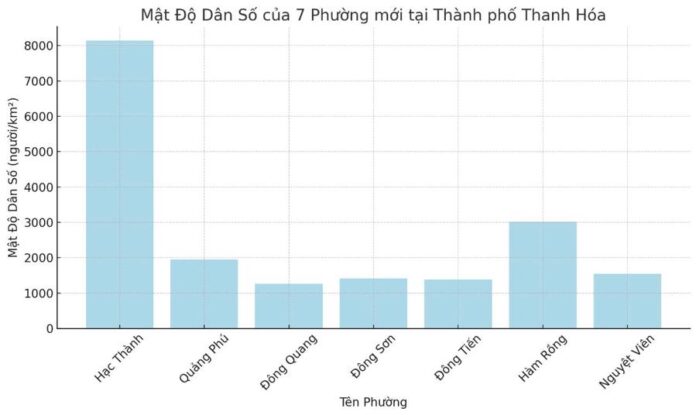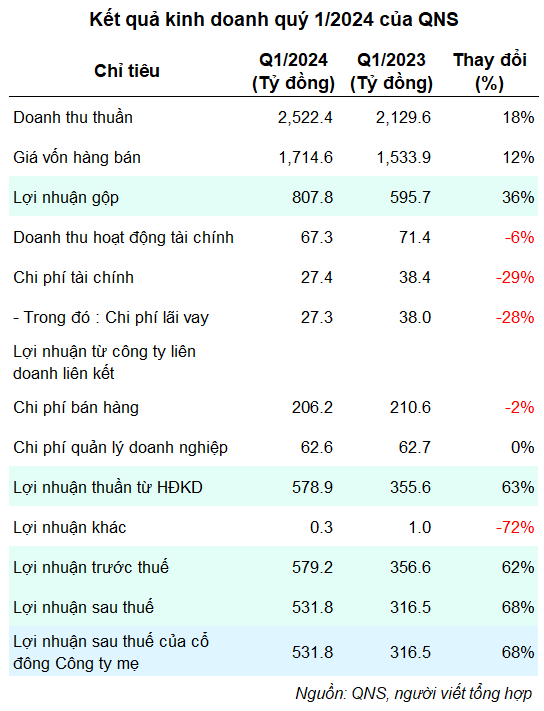The newly established Hạc Thành ward encompasses the entire natural area and population of the former Trường Thi, Phú Sơn, Điện Biên, Lam Sơn, Ba Đình, Ngọc Trạo, Đông Sơn, Đông Hương, and Đông Hải wards. Additionally, it incorporates 1.80 km2 of land with a population of 14,892 from Đông Thọ ward (the area south of Lý Thiên Bảo Street to Hạc River) and 4.29 km2 with a population of 30,866 from Đông Vệ ward (the area north of Võ Nguyên Giáp Street).
Hạc Thành ward now spans an area of 23.67 km2 with a population of 192,609. The ward office is proposed to be located at the current provincial People’s Committee headquarters.
Quảng Phú ward is formed by merging the entirety of Quảng Hưng, Quảng Phú, Quảng Tâm, Quảng Thành, Quảng Đông, and Quảng Thịnh wards, along with 4.66 km3 of land and a population of 7,742 from Quảng Cát ward (west of Nguyễn Doãn Chấp Street). It also includes 0.47 km2 of land and 3,429 residents from Đông Vệ ward (south of Võ Nguyên Giáp Street). Quảng Phú ward now covers a total area of 39.8 km2 and is home to 77,654 people. The ward office will be located at the former Quảng Hưng ward office (for party and social organizations) and the current Quảng Phú ward office (for administrative functions).

Đông Quang ward is created by merging the communes and wards of Đông Vinh, Đông Quang, Đông Yên, Đông Văn, Đông Phú, Đông Nam, An Hưng, and Quảng Thắng. Covering a total area of 49.04 km2, Đông Quang ward is home to 62,318 residents. The ward office will be located at the former Đông Phú ward office (for party and social organizations) and the Đông Văn commune office (for administrative functions).
Đông Sơn ward is established by combining the communes and wards of Đông Hòa, Đông Minh, Đông Hoàng, Đông Khê, Đông Ninh, Rừng Thông, Đông Thịnh, and Đông Tân. With a total area of 41.72 km2, Đông Sơn ward has a population of 58,950. The ward office will be located at the former Đông Sơn district office (for party and social organizations) and the district People’s Committee headquarters (for administrative functions).

Đông Tiến ward is formed by merging the communes and wards of Đông Tiến, Đông Thanh, Thiệu Vận, Thiệu Khánh, Đông Lĩnh, Tân Châu, and Thiện Giao (the latter two belonging to Thiệu Hóa district). Spanning an area of 41.97 km2, Đông Tiến ward is home to 57,844 residents. The ward office will be located at the former Đông Tiến ward office (for party and social organizations) and the Đông Lĩnh ward office (for administrative functions).
Hàm Rồng ward is established by merging the wards of Thiệu Dương, Đông Cương, Hàm Rồng, and Nam Ngạn, along with 1.8 km2 of land and a population of 14,892 from Đông Thọ ward (north of Lý Thiên Bảo Street to Hạc River). Covering an area of 20.94 km², Hàm Rồng ward is home to 63,166 people. The ward office will be located at the former Nam Ngạn ward office (for party and social organizations) and the Đông Cương ward office (for administrative functions).

Nguyệt Viên ward is created by merging the wards of Tào Xuyên, Long Anh, Hoằng Quang, and Hoằng Đại. With a total area of 22.31 km2, Nguyệt Viên ward has a population of 34,399. The ward office will be located at the former Long Anh ward office (for party and social organizations) and the Hoằng Quang ward office (for administrative functions).
The reorganization of the administrative boundaries at the communal level in Thanh Hóa city aims to enhance management efficiency, streamline the apparatus, and align with the city’s socio-economic development.
















